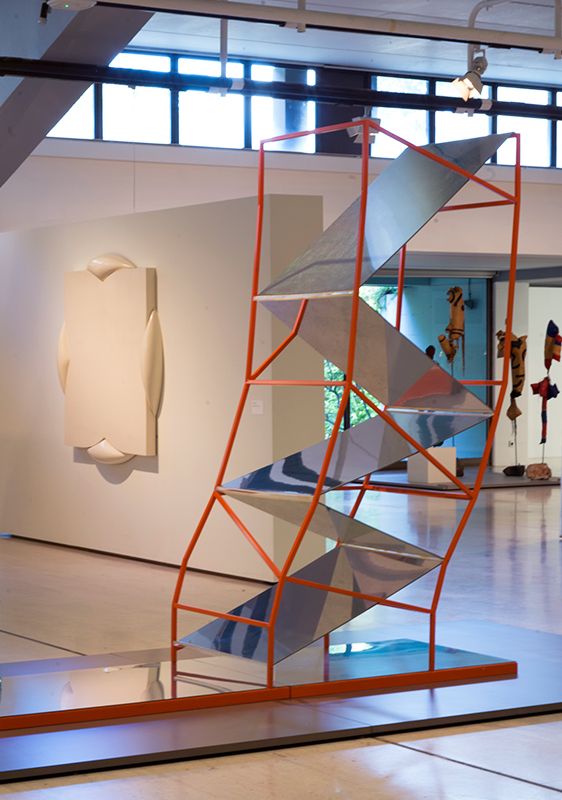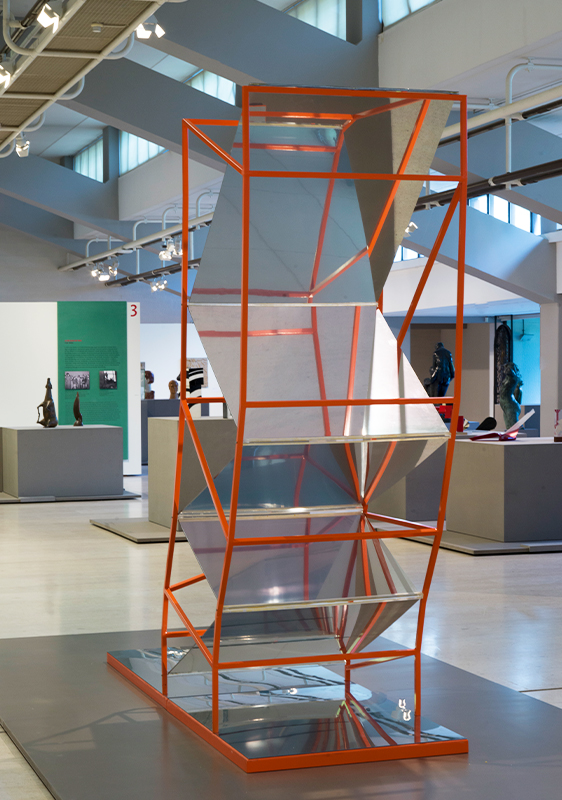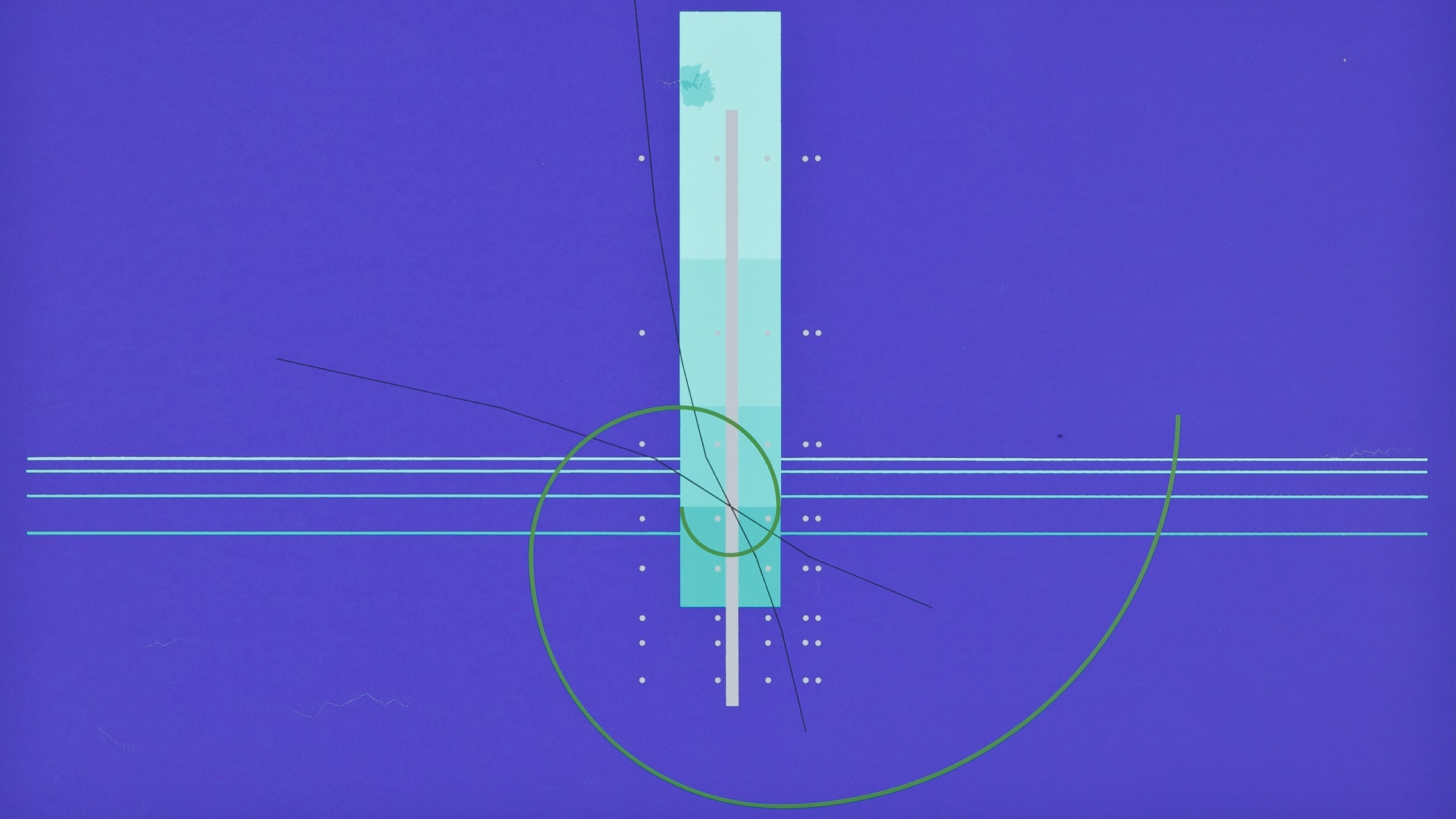Jorge Pinheiro
Fibonacci is the name by which Leonardo de Pisa is better known, one of the most important mathematicians of the Middle Ages (c. 1170–c. 1250). In 1202 he published Liber Abaci (‘The Book of Calculation’), presenting in the European context a series of numbers in which each one is the sum of the previous two (1, 2, 3, 5, 8, 13…). Although this sequence was previously known of in India, we still refer to it today as the ‘Fibonacci Sequence’.
We can find various applications of this sequence in the works of Jorge Pinheiro, often transformed into a visual game or in a playful application of numbers within geometric rules defined by the artist. Adágio para Albinoni and Ulisses e as Sereias (Adagio for Albinoni and Ulysses and the Mermaids, 1981, held in the Gulbenkian Collection) are examples of this. In some cases, the sequence is easily identifiable; in others it is applied in grids, to create patterns, to define the development of spirals or even as a basis for the composition of figurative works.
‘There is a matrix that informs both [figurative and abstract works] and there seems to be no doubt about this. Call it composition, structural organisation, or whatever you want. It works for all that.’ [1]


Grazie Mille Fibonacci is notable in that the spacing between the horizontal iron bars increases from bottom to top, thus increasing the angles between the polished aluminium planes. The rhythm created by the unfolding of these elements in space precisely obeys the numbers defined by the mathematician referred to in the work’s title.
[1] Jorge Pinheiro in conversation with Pedro Cabrita Reis in Jorge Pinheiro – D’après Fibonacci e as coisas lá fora, Serralves/Documenta, 2017, p.132.


